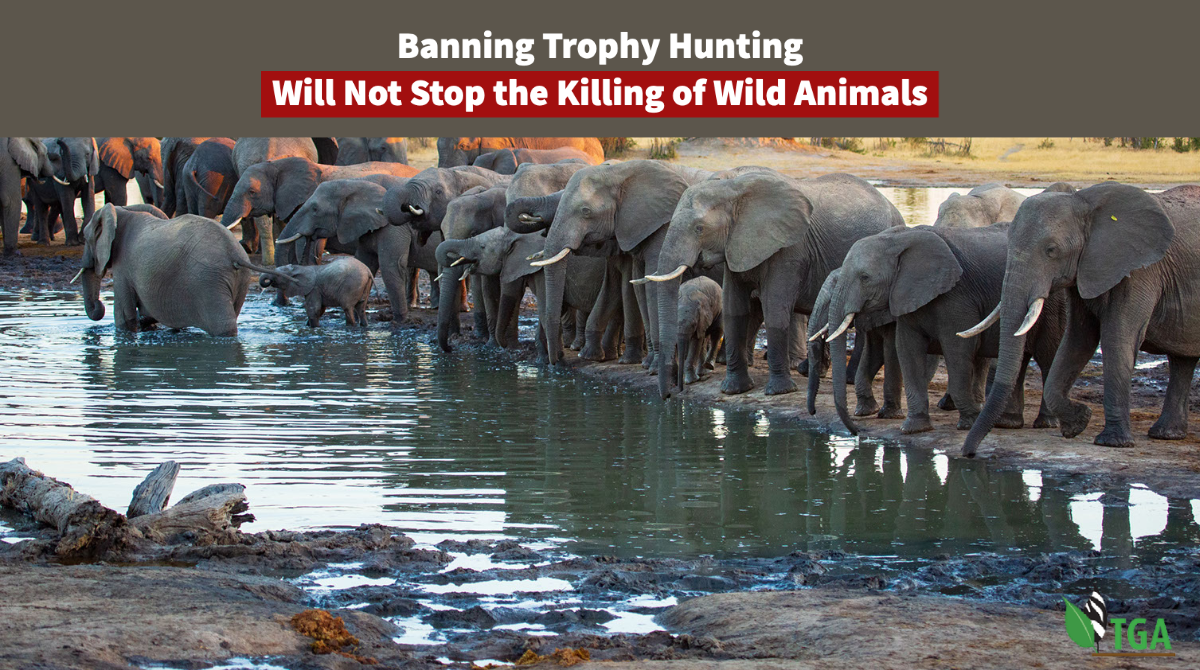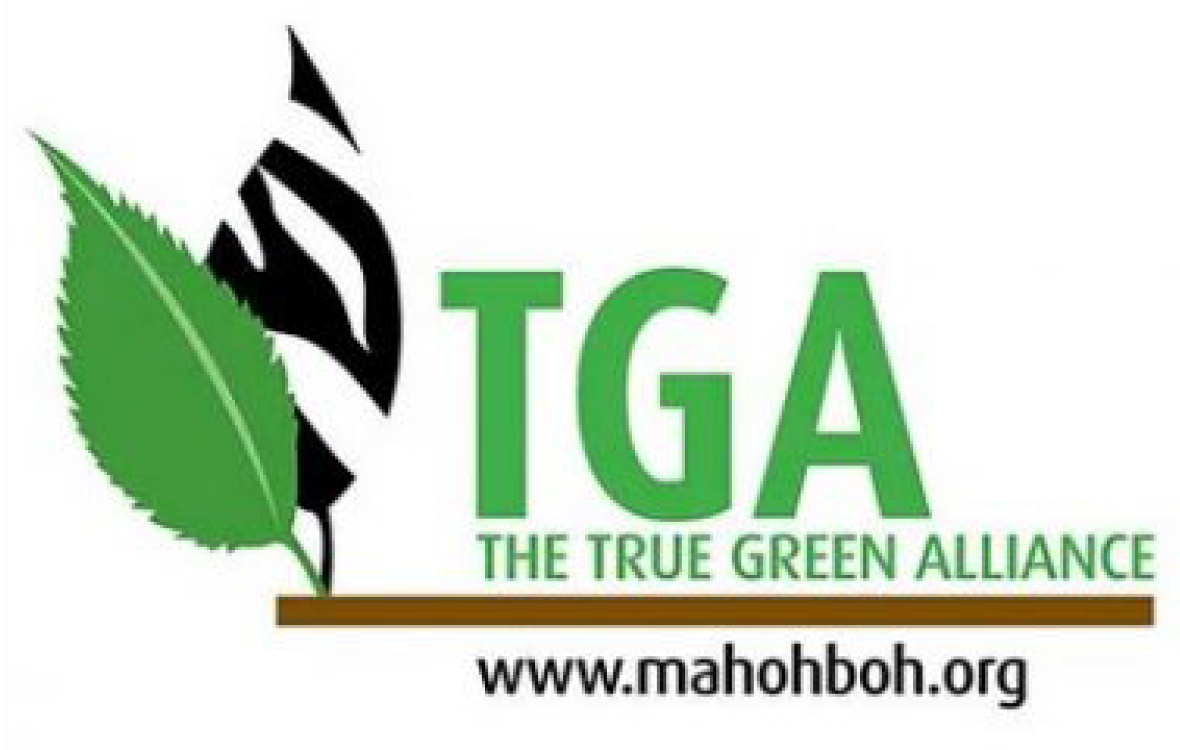THE ANIMAL RIGHTS BRIGADE seem to have bamboozled the whole world into believing that if they succeed in banning trophy hunting they will put a stop to the killing of all wild animals by man. Nothing could be further from the truth. Nothing could be less desirable. Nothing could be worse for wildlife than that. And if that is what the animal rightists truly believe, then that fact is proof enough that they know nothing about the science of wildlife management. And when society allows its unqualified members to meddle in the scientific affairs of man – when they know nothing about the subjects of those affairs – that is when the most damage is done.


The Scourge Of Animal Rightsism – Banning Trophy Hunting Will Not Stop the Killing of Wild Animals

This is not a slight on the intellect of society. Not everybody can become a brain or heart surgeon. Nor can any-old-body build a rocket that will take man to the moon and bring him back again. But there are some amongst us who can. And within our specialized communities there are qualified people that determine who can and who should, do these very special and essential tasks for humanity and who should not.
The same principles apply to the specific science of wildlife management.
How can people who have spent their whole lives in an urban environment, even those who are in very essential, recognized and honourable professions such as being a motor mechanic, a medical doctor or a waitress in a city restaurant and who have never ever seen a truly wild animal in its essential rural environment be expected to understand the complicated science of wildlife management?
And how can society allow such uninformed people to demand that whatever the solutions they prescribe should be applied? Yet that is exactly what is happening.
Let me explain this a little further.
Wildlife management is the action that man takes to achieve a man-desired objective. Simple as that! So, there is nothing natural about wildlife management. It is:-
1. Man conceived
2. Man designed
3. Man implemented
4. Man manipulated and
5. Man is the principle beneficiary.
How come man is the beneficiary? Because it is man’s objective that is being achieved.
The most important of all wildlife management objectives is to maintain species diversity. And to achieve that objective you have to be able to apply the principles and practices of wildlife management. One of which is that different species of herbivorous animals are adapted, by nature, to live in different habitat types. And if a particular habitat type is not available (in a game reserve or on a game ranch, for example) the species of animal that is adapted to that habitat type, will not be able to exist there.
To make it more problematical, in a sanctuary that carries more than one species of herbivorous animal there are multiple habitats all mixed up in the same vegetation matrix and all these animal species nibble away at the same mixture of plants, selectively. Some use just the cover or the shade of the general habitat, whilst others use other parts. When it comes to food, some hungry animals are less discrete than others when it comes to choosing what to have for breakfast. In other words, the proverbial “maintenance of species diversity” is not as easy or simple to understand, or to accomplish, in a multi-species sanctuary when that phrase is uttered glibly and so very fast.
Wildlife managers who are experts at their professions, therefore, often find it easier to ascertain what is called a carrying capacity for each herbivorous species of animal that lives in the same habitat mix and the same habitat mix normally includes habitats that make up plant communities that comprise essential habitats for all the wild animals that exist in a wildlife sanctuary.
Carrying capacity means the maximum number of animals (of a particular herbivorous wild animal species) that that particular sanctuary can carry without that particular animal species destroying its own habitat and without that animal species also destroying the multifarious habitats that all the other herbivorous animals depend upon.
If the wildlife manager then determines that one of his herbivorous animal species has reached its saturation level (a.k.a. carrying capacity level) in a game reserve – let’s say the elephant is that species – and he knows that its incremental rate (rate of annual reproduction) is 7.5% (which is correct for Kruger) – then he will know exactly how many elephants he will have to remove every year to keep his elephant population level and stable and to keep the habitats healthy. Percentage wise, he will be obliged to cull 7.5% of his whole elephant population every year. And if that population numbers 5 000, he will have to cull 375 elephants to keep his elephants in balance with their habitat.
To keep the sex-ratio constant, half of that number will have to be females (187.5) and half males (187.5). And because it is customary that all the huntable animals be males, it is from that cohort of animals from which the huntable animals will be chosen. And the huntable animals will all be third and fourth-life-quarter bulls (the best trophy-age animals). So, of this group, 93 or 94 will likely be huntable trophy quality male animals and 93 or 94 will likely be none trophy-quality animals.
Altogether, therefore, of the 375 animals which will have to be removed from the population for vitally necessary management reasons every year, only about 100 will be trophy and/or near-trophy-quality bulls. From both sexes, 275 more will still have to be removed to reduce the population number to the vitally important carrying capacity level. Hence, if trophy hunting is stopped by the uninformed human populations of this world, that action will not remove the need for killing others. Indeed, if trophy hunting is stopped, it must not, concomitantly, stop management hunting which will still be necessary to reduce the population numbers down to the carrying capacity level of the habitats every year.
And if all essential management hunting is stopped, too, Africa’s elephant population will face dismal extinction (by starvation) in the not too distant future. And if the habitats are not going to be protected from too many elephants the maintenance of biological diversity will not be possible.
In a National Park like Kruger, it is not just the elephant that is threatened with extinction, resultant purely from bad management (or rather no management at all) by the SANPark’s management staff, every other animal species extant in the National Park will be similarly threatened as will be the plant species, too.
And it must not be forgotten that, a long time ago, Parliament gave SANParks (or the National Parks Board as it was then called) a single wildlife management objective. It was instructed to maintain species diversity (nothing more and nothing less). And SANParks has not done that. It is also not even trying to do it! SANParks, in fact, is not doing any population management work at all. I tend to agree, therefore, with that growing number of South Africans who are beginning to voice their heart-felt opinion that SANParks should be taken to court and prosecuted for not taking proper care of South Africa’s wildlife heritage and that the Minister of the Environment should be tarred with the same brush.
One can sympathise with SANParks, to a point, when its scientists say that just as soon as they mention the words elephant culling, the animal rightist NGOs jump onto their press bandwagons and threaten government with international tourism boycotts. Nevertheless, I must extend my criticism of the government at large for not doing what is necessary when wild animal populations become excessive (too many for the habitats to sustainably carry). The government (SANParks and the Minister of Environmental Affairs) should listen to its own bona fide scientists and its own wildlife managers and not be led astray by the international animal rights brigade.
This, in effect, means that government should support recommendations to cull elephant populations when their numbers exceed the carrying capacities of their habitats. And, just at the moment, there are an estimated 30 000 too many elephants in Kruger National Park. And, just at the moment, all the big eagles, the vultures and the ground hornbills in Kruger National Park are all facing extinction, which will happen within the life-spans of most South Africans who are alive today.
The animal rightists’ modus operandi is easy to understand and it has nothing to do with saving nature for the benefit of current and future generations of South Africans. Their whole purpose is to raise money for themselves. Raising money from a thoroughly alarmed public who are made-to-be-alarmed by reason of the animal rightists’ own false propaganda. So, getting the public to be alarmed, is the first step in their self-seeking money-making strategy. And, to get the public to be alarmed, they fabricate extravagant and emotionally-charged propaganda stories that are simply not true. So they are lies.
For example, they tell the public that the African elephant is endangered, that it is facing extinction, that every single elephant in creation needs to be saved from cruel hunters, unscrupulous poachers and even-more-cruel government wildlife managers who advocate elephant hunting and culling as legitimate elephant management tools.
Why are these stories lies? They are lies because (for example) Kruger National Park is carrying (so the Kruger scientists have told us) 34 000 elephants, when the elephant carrying capacity for the whole of Kruger National Park according to my own calculations is 3500 (+/- 500) (i.e. one elephant per five square kilometers). So, in reality, Kruger is carrying some ten times the number of elephants that it should be carrying. How can that be construed as representing elephants facing extinction?
The same argument applies when you consider:
(1) That Zimbabwe’s Hwange National Park is said to be carrying 50 000 elephants when its carrying capacity, in 1960, was calculated to be 2 500. Hwange therefore is, arguably, carrying 20 times too many elephants.
(2) The same argument applies when the elephant population of Zimbabwe’s tiny Gonarezhou National Park is considered. The Gonarezhou should be carrying no more than 1 000 elephants and it is currently carrying 14 000.
(3) When I tell you that Botswana’s KAZA-Trans Frontier Conservation Area is carrying somewhere between 220 000 and 250 000 elephants and that those elephants are visibly destroying their own habitat hand-over fist, you might understand my deep concern.
Note: I have not stated an elephant carrying capacity for the KAZA-TFCA which is because I don’t know what it is (although I suspect it to be roughly the same as applies to Hwange – one elephant per five square kilometers).
Note: Hwange is part of the KAZA-TFCA. But when I tell you that practically every big tree species (edible to elephants) in the KAZA-TFCA has already been rendered virtually extinct; that 50 years ago those very same trees were the favourite elephant food species; and that practically all those trees that are still alive in the KAZA-TFCA, today, are not palatable to elephants – those facts should start to get everybody worried. And this scenario is clearly not one that supports the animal rightists’ alarmist statement that Africa’s elephants are facing extinction.
The truth of this matter is this: When someone tells a lie, and then solicits funds and accepts donations on the basis of that lie, from the very people he has told that lie to, such an action is called “fraud”. And, according to the American RICO Act (Racketeering Influenced Criminal Organisations Act), when that same fraud is perpetrated twice inside a period of ten years, the fraud is legally reconstituted into being a “racket”. And, (according to the RICO Act), racketeering is organized crime. Ipso facto, the animal rights movement is organised crime.
Whenever our government, our government departments and/or our government officials, allow the animal rights movement to operate within our society with impunity (as is the case today), therefore, we are actually aiding and abetting organized criminal operations within South African society.
Animal Rights-ism is not the same thing as Animal Welfare-ism! They are as similar to each other as is chalk is to cheese!
Ron Thomson (CEO True Green Alliance of South Africa)
Copyright 2023 | All Rights Reserved | Powered by WILD & JAG / GAME & HUNT


